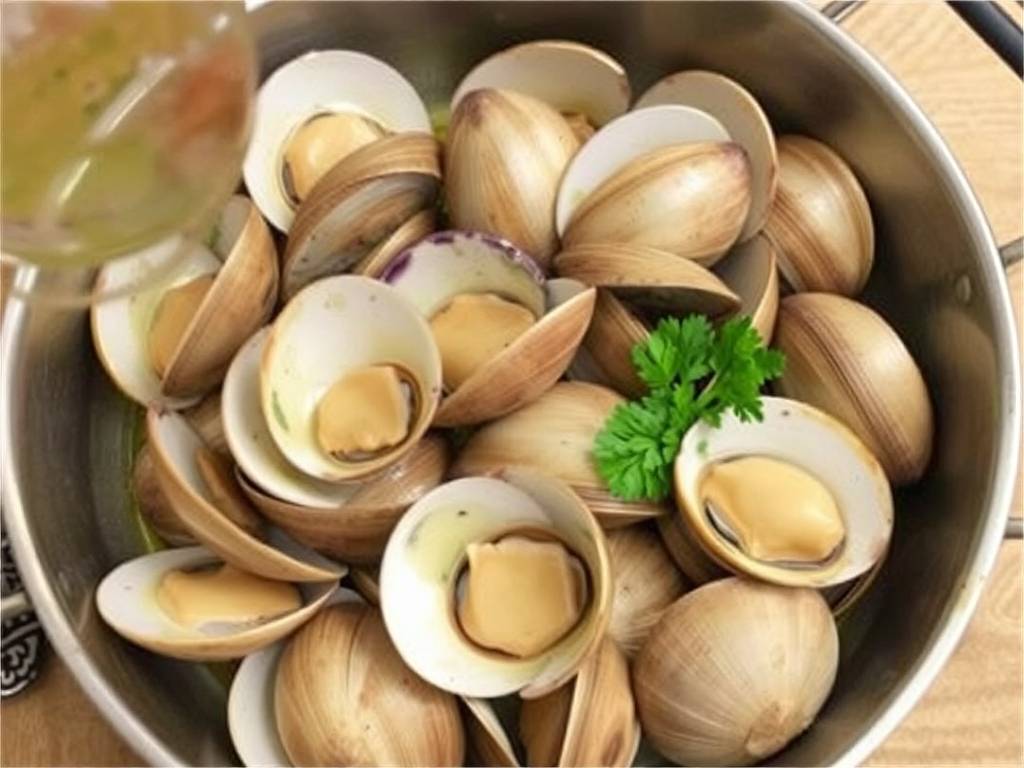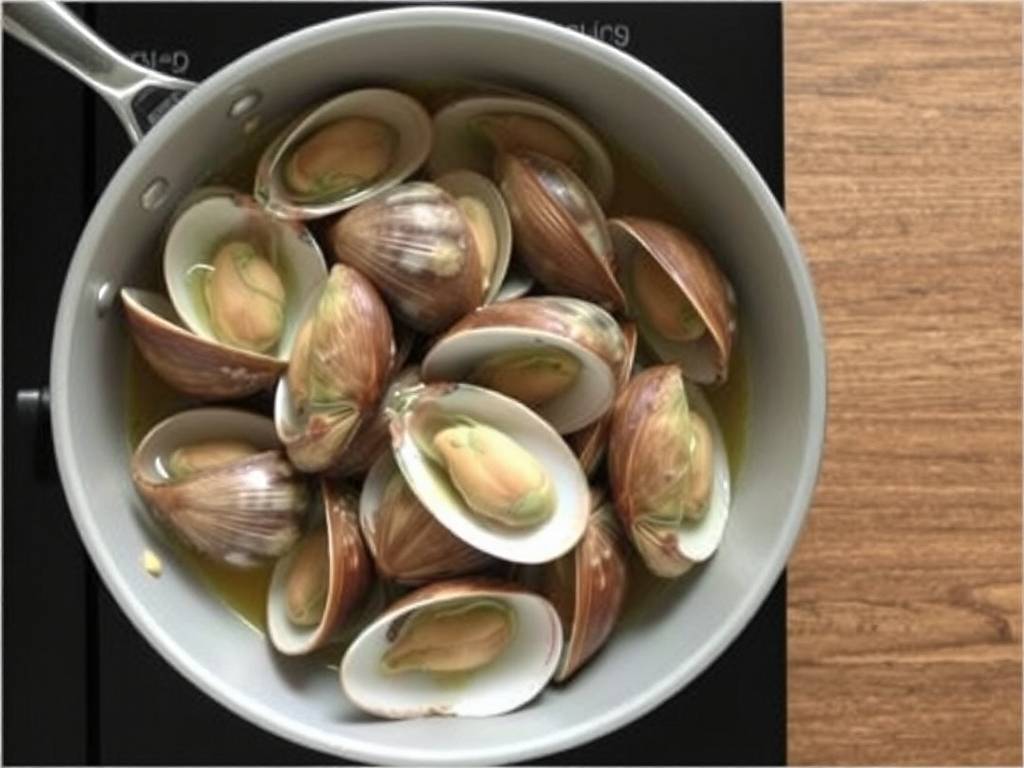A Culinary Journey: Mastering the Art of White Wine Butter Clams
There's something truly magical about a pot of clams. The moment the lid comes off and that fragrant steam billows out, you're instantly transported to a seaside bistro. Among the myriad of ways to prepare these briny bivalves, one method stands out for its elegance, simplicity, and sheer deliciousness: cooking clams in a white wine and butter sauce. This dish, often called clams in white wine sauce or clams with garlic butter wine sauce, is a timeless classic that feels both sophisticated and comforting.
If you've ever been intimidated by the thought of preparing seafood at home, let this be your gateway recipe. This guide will walk you through every single step, from selecting the best clams to creating a sauce so good you'll want to drink it with a spoon. We'll cover common pitfalls, answer all your questions, and ensure you create a restaurant-quality meal right in your own kitchen. So, tie on your apron, and let's dive into the wonderful world of cooking clams.

The Foundation: Choosing and Prepping Your Clams
The success of any clam dish hinges on two critical preparatory steps: selection and cleaning. Skipping these can lead to a gritty, sandy, or worse, an unpleasantly fishy experience.
First, let's talk about how to choose fresh clams for cooking. You'll typically want to use smaller, hard-shell clams like Littlenecks or Manila clams. Their tender meat and ability to cook quickly make them perfect for this application. When you're at the fish counter, look for clams that are tightly closed. If a clam is slightly open, give it a gentle tap. A live clam will slowly close back up. If it remains gaping, discard it—it's no longer alive and not safe to eat. This simple tap test is your best defense against spoiled seafood.
Once you've brought your fresh clams home, the next non-negotiable step is purging them of sand. Nothing ruins the luxurious texture of a buttery clam like an unexpected crunch of grit. The process for cleaning and purging clams is straightforward. Place the clams in a large bowl and cover them with cold, salted water. Use about 1/3 cup of salt per gallon of water, mimicking the salinity of seawater. Let them soak for 20-30 minutes. During this time, the clams will filter the water and expel any sand trapped inside their shells. Some cooks like to add a handful of cornmeal to the water, believing it encourages the clams to purge more vigorously. After soaking, remove the clams and scrub each shell thoroughly under cold running water with a stiff brush to remove any external debris. Your clams are now ready for their transformation.
Building the Flavor: Your Aromatics and Ingredients
The beauty of this dish lies in the harmony of a few high-quality ingredients. Here’s what you’ll need for a generous serving for two to three people:
- Clams: 2 pounds of fresh Littleneck or Manila clams, cleaned and purged.
- Fat: 2 tablespoons of extra-virgin olive oil and 3 tablespoons of unsalted butter. The olive oil provides a base for sautéing, while the butter delivers that irreplaceable rich flavor.
- Aromatics: 4-5 cloves of garlic, finely minced, and 1 small shallot, finely diced. These form the flavor backbone of your sauce.
- Wine: 1 cup of dry white wine, such as Sauvignon Blanc, Pinot Grigio, or an unoaked Chardonnay. This is the heart of your easy white wine sauce for seafood. A good rule of thumb is to use a wine you would enjoy drinking. The alcohol cooks off, leaving behind a wonderful acidity and depth.
- Herbs: A few sprigs of fresh thyme and 2-3 tablespoons of freshly chopped flat-leaf parsley. The thyme infuses the sauce as it cooks, while the parsley is stirred in at the end for a burst of fresh color and flavor.
- Seasoning: Kosher salt and freshly cracked black pepper. Be cautious with the salt until the very end, as the clams and butter will release their own salinity.
- Finishing Touch: Another 2 tablespoons of cold, unsalted butter to finish the sauce, giving it a beautiful, glossy emulsion.
The Cooking Process: A Step-by-Step Symphony
Now for the main event. Cooking clams is a fast process, so have all your ingredients prepped and within arm's reach. This is what the French call mise en place.
-
Sweat the Aromatics: In a large pot or Dutch oven with a lid, heat the olive oil and 3 tablespoons of butter over medium heat. Once the butter has melted, add the shallot. Cook for 2-3 minutes until it becomes translucent and fragrant. Add the minced garlic and cook for just another 30-60 seconds, until fragrant. Be vigilant—you don't want the garlic to brown and become bitter. This initial step is crucial for building a flavorful base for your garlic butter wine sauce.
-
Deglaze with Wine: Pour in the cup of white wine. Add the fresh thyme sprigs. Bring the liquid to a lively simmer, scraping up any bits that may have stuck to the bottom of the pot. Let the wine reduce by about half, which will take 3-4 minutes. This cooks off the harsh alcohol and concentrates the wine's flavor, forming the foundation of your sauce.
-
Steam the Clams: Increase the heat to medium-high and add all of your cleaned clams to the pot. Immediately cover with a tight-fitting lid. The clams will now steam in the aromatic wine vapors. Let them cook for 5-8 minutes. You'll hear a delightful clattering as the shells knock against the pot.
-
Check for Doneness: After 5 minutes, carefully remove the lid (mind the steam!). You should see that most of the clams have opened. Use a slotted spoon or tongs to remove the opened clams to a large serving bowl. Discard any clams that remain firmly closed after a reasonable cooking time—they were likely dead before cooking and are not safe to eat. This is the key to a perfect steamed clams recipe.
-
Create the Luxurious Sauce: You now have a pot full of incredibly flavorful liquid. This is the essence of the dish. Remove the thyme sprigs. Reduce the heat to low and swirl in the remaining 2 tablespoons of cold butter. This technique, called monter au beurre, thickens the sauce slightly and gives it a lovely, velvety sheen. Stir in the fresh parsley and a generous crack of black pepper. Taste the sauce before adding any additional salt, as it is likely already perfectly seasoned from the clam liquor and the initial butter.
-
Serve Immediately: Pour the incredible white wine butter sauce over the clams in the bowl. The final, essential step for serving is to provide plenty of crusty, warm bread. A rustic baguette or sourdough is perfect for sopping up every last drop of the delectable sauce. For a more substantial meal, serve the clams over a bed of linguine or angel hair pasta, transforming it into a magnificent linguine with white wine clam sauce.
Troubleshooting and Pro-Tips for the Perfect Dish

Even with a simple recipe, questions can arise. Let's address them all in one place to ensure your success.
- My sauce is too thin. If you prefer a thicker sauce, you can create a simple easy white wine sauce for seafood by letting it reduce further after removing the clams. Alternatively, you can make a beurre manié by mashing a tablespoon of soft butter with a tablespoon of flour and whisking it into the simmering sauce in small bits.
- My sauce is too salty. The clam liquor is naturally very salty. If you find your sauce is too briny, you can balance it by adding a squeeze of fresh lemon juice or a tiny pinch of sugar. To prevent this next time, you can strain the cooking liquid through a fine-mesh sieve lined with a cheesecloth to remove any residual grit before adding the finishing butter, which gives you more control.
- Can I make this ahead of time? Clams are best enjoyed immediately after cooking. They can become rubbery if reheated. However, you can prep all your ingredients in advance to make the cooking process lightning-fast when you're ready to eat.
- What are the best sides for clams in white wine sauce? As mentioned, crusty bread is non-negotiable. A simple arugula salad with a lemon vinaigrette provides a refreshing, peppery contrast. For a heartier meal, creamy polenta or roasted potatoes are excellent for absorbing the sauce.
Cooking clams in a white wine and butter sauce is more than just a recipe; it's an experience. It’s about embracing the simplicity of quality ingredients and the joy of sharing a beautifully crafted meal. With this comprehensive guide, you have everything you need to confidently create this stunning dish. So go ahead, pour yourself a glass of that white wine, and get ready to receive some well-deserved compliments. Happy cooking






发表评论